10 Best Solar Generators with Advanced Buyer’s Guide
Written by : Nikola Gemeš | Last Updated: March 14, 2024
1
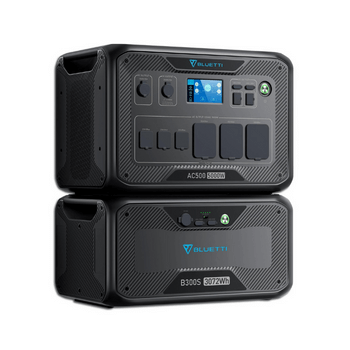
Bluetti AC500 + B300S
2
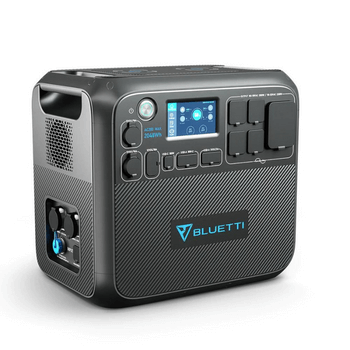
Bluetti AC200MAX Expandable Power Station
3
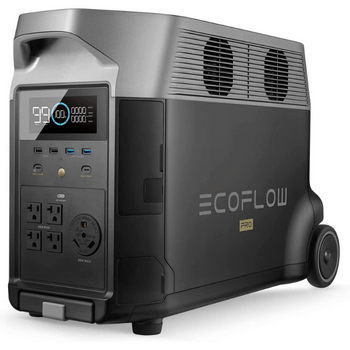
Ecoflow Delta Pro
4
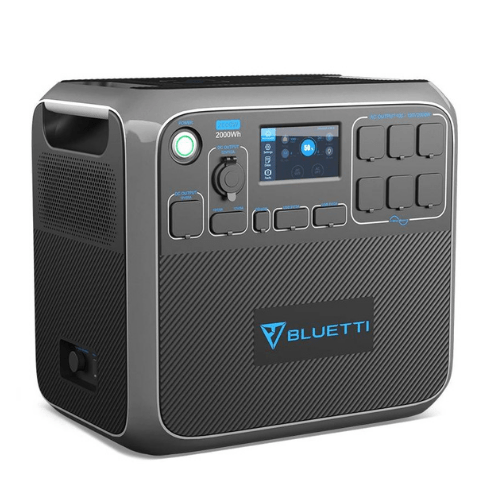
Bluetti AC200P Portable Power Station
5
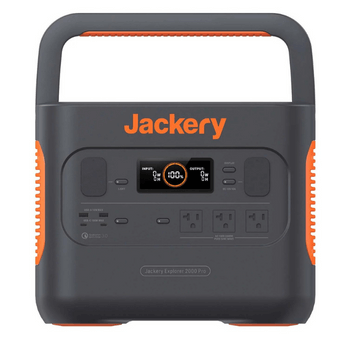
Jackery Solar Generator 2000 Pro
6
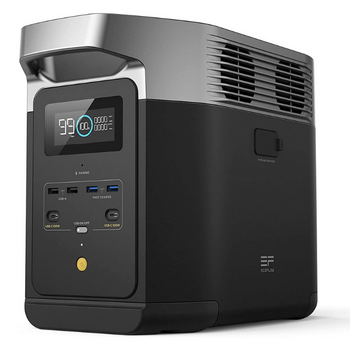
EcoFlow Delta 2
7

Jackery Explorer 1000
8
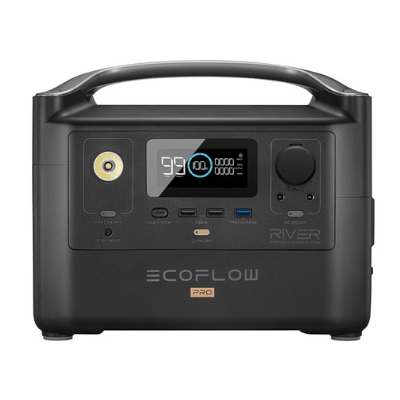
EcoFlow RIVER Pro Portable Power Station
9
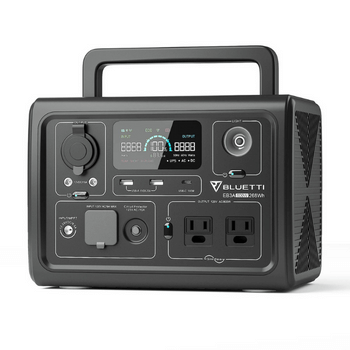
BLUETTI EB3A Portable Power Station
10
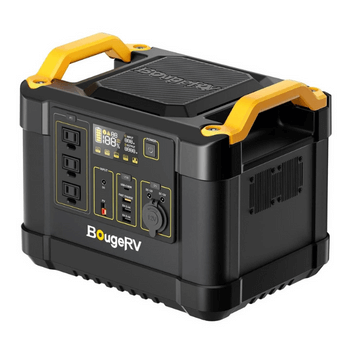
BougeRV 1100Wh Portable Power Station
Contents
ToggleNeed a new solar generator? Are the features making you too confused? Our in-house electrical engineer offers a detailed review of the best solar generators.

The charge controller, the inverter, the difference between lead-acid and lithium-iron batteries… choosing the best solar generator can be confusing if you’re not an expert.
Ask 10 people and most can’t even tell watts from volts.
To help you, I’ve got the lowdown on the 10 best solar generator units, together with the pros and cons of each product, so you can choose the one that works for you.
I'll also explain how a solar generator works, why you might need one, and things to look out for when buying one.
Let’s get down to it and find out what are the best solar generators in the market right now.
My Top 3 Picks for the Best Solar Generators
Bluetti AC500 + B300S
- Capacity: 3072Wh
- Output: 5000W
- Solar charging time: 1-1.2 hrs
- Battery cycles: 3,500
- 18 outlets
- 7 ways of charging
- Expandable to 18kWh
Bluetti AC200MAX
- Capacity: 2048Wh
- Output: 2200W
- Solar charging time: 3-3.5 hrs
- Battery cycles: 3,500
- 16 outlets
- 7 ways of charging
- Dedicated RV port
Ecoflow Delta Pro
- Capacity: 3600Wh
- Output: 3600W
- Solar charging time: 2-2.2 hrs
- Battery cycles: 6,500
- 4500W with X-Boost
- Dedicated RV port
- Expandable to 10.8kWh
The 10 Best Solar Generators (Reviewed by An Electrical Engineer)
1. Bluetti AC500 + B300S | Home Battery Backup (Best Overall)
“Power! Unlimited Power!”
— Emperor Palpatine
Here’s the deal. Ever since Bluetti has unveiled its AC500 model in September 2022, I’m asking myself one question:
How did they manage to fit 5000 watts of power in a box the size of the 2000-watt AC200P model?
Don’t get me wrong, Bluetti AC200P is still a great choice (please scroll down) but, the AC500 blows it out of the water.
This two-piece solar generator is able to take in 3,000 watts of DC input power, which makes it a suitable inverter for a small- to mid-sized rooftop system.
Following the familiar Bluetti arrangement, on the front side you find intuitively grouped six 120V AC outlets in a long row, each with a neat rubber dust cover.
But there's an easter egg — the sixth socket is not 20 or 30, but a big old 50-amp outlet that allows you to power your entire household via a single port.
Just ask your electrician to install an appropriate connection to your power box, and you’re good to go.
Above them, there are two cigarette lighter sockets at 12V and 24V, which means you can power a range of portable accessories. There are four USB-A and two USB-C ports.
The second part of this solar generator is the power storage unit, the Bluetti B300 with a capacity of 3,072Wh.
You can connect six of these batteries and achieve a maximum capacity of 18,4kWh — enough to power a single-family home in an emergency.
Pros
- Whopping 5kW output
- Expandable battery
- High-power 50-amp outlet
- 18 output ports with rubber caps
- 7 ways of charging
- 3,000 watts solar charging
- Wireless charging pads
Cons
- Expensive main unit and batteries
Why Do I Like It?
The Bluetti AC500 + B300S is an amazingly flexible solar power station combo that offers home solar grade power in a semi-portable package.
2. Bluetti AC200MAX Expandable Power Station (Best Solar Generator for RVing)
No matter how good you are, there’s always a new challenger behind the corner. Ladies and gents, this is the solar generator that pushed last year’s favorite — AC200P — down the list.
The beefy 2,048Wh LiFePO4 battery coupled with a 2,200W pure sine wave inverter and a total of 16 output ports make AC200MAX a solid runner up for me.
It will run any household appliance, which is probably overkill for most weekend users, but as they say, it’s firepower that separates men from the boys.
What really puts a smile on my face is the dedicated 30A DC port through which you can directly power a travel trailer or small RV.
Now 2,048 watt-hours can't power my entire RV indefinitely, but I was able to use it for backup and “dry camping” for a couple of days.
The best thing: the AC200MAX costs twice less than EcoFlow Delta Pro, another hard-hitter on this list.
Pros
- Massive power output
- Massive battery capacity
- Dedicated 30-amp RV/trailer port
- 16 output ports
- 7 ways of charging
- Wireless charging pads
- 1400W dual charging
Cons
- Heavy lithium-iron battery
Why Do I Like It?
This generator solved all the shortcomings of its predecessor, the AC200P, and is still compactly sized for me to fit it in the car, boat, tent, or even my desk.
3. Ecoflow Delta Pro (Best for Offgrid Living)
Not everyone has the skills and time to build a DIY solar generator for off-grid living. On the other hand, if you can dispense with $3,699, there’s hardly a better off-grid deal than the EcoFlow Delta Pro.
Following the well-known EcoFlow design and top-of-the line features like the latest LiFePO4 battery, onboard Bluetooth and WiFi controls, the Delta Pro is 3600 watts of raw AC power on wheels.
And if the massive 3,600 watt-hour battery isn’t enough for you, you can hook it up to two additional 3,600 batteries for 10,800Wh capacity.
That’s where solar generators break into the gas generator range.
Seriously, the Delta Pro can go toe to toe with a smaller propane/natural gas generator, as it was able to power even my largest appliances like refrigerators and freezers through a power outage.
For this solar generator, personal electronics and lighting are like flies on a buffalo’s back — it doesn’t even know they’re there.
With four EcoFlow 400W flexible Smart Home Panels, I was able to charge this monster in a little more than 2 hours.
But bear in mind that it was because the available solar conditions in my area were ideal.
Pros
- 4500W with X-Boost output
- Fast solar charging
- 15 output ports
- Dedicated 30A RV port
- App managed
- Great contrast display
Cons
- Heavy
- No wireless charging pad
Why Do I Like It?
I’ve always appreciated the EcoFlow’s flow-through cooling design with two fans sucking in cool air and the opposing fans driving hot air out. With so much power in one box, proper cooling is a must.
4. Bluetti AC200P Portable Power Station (Best Deal)
The uncontested last year’s winner of this list, the Bluetti AC200P is still pretty high up on the list.
With an added bonus!
As more resilient, more versatile, and more powerful Bluettis have emerged, the AC200P is available at a steal price of only $1,699.
But even today, this Bluetti packs a lot of punch for its size.
In a well-rounded package, you get a total of 17 output ports to power your gadgets, including the two ultra-handy wireless charging pads.
With a power capacity of 2,000 watts, this power station can run almost any appliance, including my fridge, microwave, toaster, and in a pinch — even a room heater.
Thanks to the surge power of 4,800 watts, the AC200P has no trouble firing up power tools and machines with AC motors.
The new lithium-iron technology gives you still unbelievable battery life of more than 3,500 charge cycles. This means you won’t have to think about getting one for the next 10 years, even with heavy use.
Pros
- 2000W power output
- 2000Wh battery capacity
- More than 3,500 battery life cycles
- 17 output ports
- 5 ways of charging
- Fast solar charging
- Wireless charging pads
- Easy to use touch-screen controls
Cons
- Lacks dedicated RV port cable
- Heavy lithium-iron battery
Why Do I Like It?
The innovative lithium-iron battery and 700W solar charge capacity give me super fast solar charging. I can run my camping gear all night, and the AC200P still gets to fully charge until lunchtime.
5. Jackery Solar Generator 2000 Pro (Best All-rounder Solar Generator)
The biggest portable solar generator from Jackery easily found its way to my list. The 2.16 kilowatt-hours of capacity are enough to power a full camping setup for a few days.
And if you hook the 2000 Pro to six 200W solar panels, you can get it fully charged in less than 3 hours.
This is a huge upgrade from the Explorer 1000 model that could connect only one panel, resulting in 8-hour charges.
The Jackery 2000 Pro comes with plenty of high-power and low-power ports which allowed me to simultaneously power my home appliances and charge my gadgets.
So what’s the tradeoff?
Weight. Unfortunately, with this model Jackery is breaking up the tradition of 20+ lbs solar generators that were the top choice for people like me who move around a lot.
Pros
- Easy to use
- Great capacity-to-power ratio
- 3 AC outputs & 4 USB ports
- Easy to use LCD screen
- Fast solar charging
- Solar adapter cable included
Cons
- Bit heavy for its size (compared to its predecessor)
- No LED flashlight
Why Do I Like It?
The Jackery 2000 Pro hits the best blend of power, capacity, input/output capability, portability, and durability.
6. EcoFlow Delta 2 (Best Medium Capacity)
The slimmed down version of EcoFlow’s Delta Pro, this solar generator uses the same great LiFePO4 battery chemistry and has kept the WiFi and Bluetooth connectivity.
This is a huge leap from its predecessor, the original Ecoflow Delta 1300 that uses regular Li-ion batteries and has modest capabilities.
For less than $1,000, you’re getting a decent power output, and a very manageable weight of 27 lbs.
The weight becomes even more manageable with EcoFlow’s trademark molded carrying handles.
Another trademark of Delta models is the abundance of output ports: You get six AC ports, four USB ports, two DC ports and one 12V car port.
Using the same great Smart Home flexible panels, I managed to get a full charge in a little more than 1 hour!
Pros
- Super-fast solar charging
- 6 AC outlets
- Expandable with second battery
- High-visibility LCD screen
- Attractive design
- Easy to carry
Cons
- No LED flashlight
- Impractical orientation of ports
Why Do I Like It?
The EcoFlow Delta 2 hits the sweet spot for a small family emergency backup power source or a road trip solar generator. With a bigger battery, it would be a serious contender to the much more expensive Jackery Explorer 2000.
7. Jackery Explorer 1000 (Best for Camping)
Very competitively priced and with a solid capacity and power output, the Jackery 1000 is indeed a camper king.
The Explorer 1000 is the best solar generator for campers, adventurers, and all those outdoor types who need plenty of power on the go.
With a weight of 22 lbs and a beefy molded handle, the Jackery Explorer 1000 is one of the most portable solar generators on the list. Still, don’t let the compact dimensions fool you.
Its 1,000 watts of continuous AC power and the 1,002Wh battery were enough to power my electric grill for 50 minutes, my TV for 13 hours, and my mini-fridge for 17 hours.
And if you can’t leave your work behind, your boss will be happy. With the Explorer 1000, I was able to charge my Macbook Pro eight times — on a single charge.
Pros
- Easy to use
- Best weight-to-power ratio
- 3 AC outputs & 4 USB ports
- High-visibility LCD screen
- Built-in flashlight
- Solar adapter cable included
Cons
- Slow solar charging
- No water resistance
Why Do I Like It?
You don’t come to appreciate some features until you start using the device. Jackery Explorer series have all their ports on one side. This way, I can always tell what goes in and what goes out.
8. EcoFlow RIVER Pro Portable Power Station (Best Value for Money)
You’re a weekend hunter, fisherman, or camper. You value gear that works under any conditions, but you don’t want to break the bank.
Like its bigger cousin, the Delta 2, the River Pro uses the same ultrafast charging technology, so you can charge it from the wall from 0 to 80% in an hour.
On the business end, the River Pro may not power a microwave oven or an electric grill, but it still packs enough power to run the fridge, coffee maker, or TV in your cabin.
Go off-grid and you get 10 charges for your laptop or no less than 60 charges for your phone.
On the downside, you’d struggle to run any serious power tools or appliances, so I can’t recommend this as a backup power source for your home or workshop.
Pros
- Very competitively priced
- 10 output ports
- Fast solar charging
- Built-in flashlight
Cons
- Sub-1000W power rating
- Uncomfortable carrying handle
Why Do I Like It?
I like the fast-charge 60W USB-C port. This way I was able to top off my drone even when the AC outlets were taken.
9. BLUETTI EB3A Portable Power Station (Best Ultralight)
Many of these solar generators are called portable, but I challenge you to haul the 60 lbs AC200P from the parking lot to the camping site some 100-200 meters up the trail.
But with the Bluetti EB3A, you won’t even break a sweat.
Thanks to the modern LiFePO4 battery, this ultra-portable solar generator weighs only 10 lbs and still gives you 9 output points.
The rated output of 600W can’t compete with heavyweights like the Bluetti AC500 and EcoFlow Delta Pro, but it will power everything you can fit into your backpack.
And now listen to this: the Bluetti EB3A fully charges on solar three times faster than similarly sized solar generators.
Such a fast charging time is made possible mainly thanks to the quality built-in MPPT charge controller and excellent Bluetti PV200 portable solar panels.
The solar panels have an efficiency of 23.4%, which allowed me to completely charge this solar generator in under 2 hours during a bright, sunny day.
For $209 you can hardly find a more capable budget deal.
Pros
- Ultra lightweight
- Fast solar charging
- Wireless charging pad
- High-end display
- Built-in flashlight
- Very competitive price
Cons
- Low-capacity battery
- Flashlight faces the wrong direction
Why Do I Like It?
The display goes beyond just basics (like overall charge) and tells you how much power is flowing in and out and which ports are active. Not something you’d expect from generators in this size or price range.
10. BougeRV 1100Wh Portable Power Station (Best for Construction Sites)
Cordless power tools are great as you don’t have to chase power sockets and worry about cords in messy areas.
However, quality cordless tools are expensive, especially if you go in the pro-series.
But why throw your trusted corded tools away?
With the rugged aluminum casing and two sturdy carrying handles, the BougeRV 1,100Wh Portable Power station is born for construction sites and tough handling.
There are no bells and whistles on this one — it's just a simple LCD screen and 10 output ports with a total output of 1,200W.
I was able to plug in my drill while charging my phone and brewing coffee at the same time using the 12V DC car charging port.
This makes the BougeRV a great solar generator for RVs and road trips, especially if you upgrade your camper with an array of solar panels.
Pros
- Easy to use
- Best weight-to-power ratio
- 3 AC outputs & 2 DC ports
- High-visibility LCD screen
- Built-in flashlight
- Rugged aluminum case
Cons
- Slow solar charging
- A bit heavy for the power output
Why Do I Like It?
Maybe it’s just me, but I love when a portable solar generator has all of its input/output ports on the same side. This way I always know what’s plugged in and what’s getting charged.
Comparison Table: The Ultimate Showdown!
Solar Generators | Battery Capacity | Battery Life Cycles | Rated Output | Solar Input | Solar Charging Time | Weight (Approx.) |
BLUETTI AC500 + B300S | 3072Wh | 3,500 | 5000W | 3000W | 1-1.2 hours | 66 lbs. + 84 lbs. |
BLUETTI AC200MAX | 2048Wh | 3,500 | 2200W | 900W | 3-3.5 hours | 62 lbs. |
Ecoflow Delta Pro | 3600Wh | 6,500 | 3600W | 1600W | 2-2.2 hours | 99 lbs. |
Bluetti AC200P | 2000Wh | 3,500+ | 2000W | 700W | 3-4 hours | 60 lbs. |
Jackery 2000 Pro | 2160Wh | 1,000 | 2200W | 1200W | 2.5 hours | 43 lbs. |
EcoFlow Delta 2 | 1024Wh | 3,000 | 1800W | 500W | 1.2 hours | 27 lbs. |
Jackery Explorer 1000 | 1002Wh | 500 | 1000W | 200W | 8 hours | 22 lbs. |
EcoFlow RIVER Pro | 720Wh | 800 | 600W | 200W | 3 hours | 17 lbs. |
BLUETTI EB3A | 269Wh | 2,500 | 600W | 200W | 1.8-2 hours | 10 lbs. |
BougeRV 1100Wh Portable Power Station | 1100Wh | 1,500 | 1200W | 130W | 4.5-5.5 hours | 30 lbs. |
What Is A Solar Generator?
A solar generator is a device you can use to power your appliances in case of an outage or when you don’t have access to grid power.
In the off-grid mode, solar generators use solar panels to charge up, so manufacturers sometimes offer special “solar generator + panel” deals.
Most solar generators are made to be portable — designed as a sturdy box that contains the battery, inverter, and the control circuits.
On the outside, a solar generator usually has:
- Input ports for charging from the wall, solar panels, and the car
- Multiple outlets, including 110/120V AC ports, 12V DC ports, and USB ports
- Control display that shows the power use, battery information and sometimes access to settings (Bluetti AC200P & EP500)
However, not all solar powered generators are the same and not all generators work with all solar panels. There are a few things you need to know before you go shopping.
But first, let me explain how these power stations work.
How Do Solar Power Generators Work?
Every solar generator today consists of two main parts:
When you plug your device into a solar generator you’re basically using the power stored in its battery.
You can charge it in three ways:
- Grid Charging
- Solar Charging
- Car Charging
Grid Charging
This is the easiest way — just plug the solar powered generator into a wall outlet and charge it like any battery-run device until it beeps 100%.
This is also the fastest way. EcoFlow solar generators can go from 0-80% in just one hour via grid charging.
However, I don’t need to tell you that grid charging is only possible when you have access to… well, the grid.
This is why we value and rate solar generators for their ability to take charge from solar panels in the first place.
Solar Charging
Solar panels provide free and clean power during the day and for many users, the main point of having a solar power generator is to be able to charge it from the sun.
Solar charging speed depends on the following:
- Size and number of your panels
- Size of the battery
- Solar input power that the generator can take
For solar charging, you need a special solar adapter cable that some manufacturers include in the solar generator kit.
An average solar charging time is around 5 hours, but large generators like the Renogy Lycan 5000 and the Bluetti EP500 have a dual-charging mode which lets you charge from the grid and solar at the same time.
This way you can charge even a 5,000Wh battery in just 1 hour.
Car Charging
This is definitely the slowest way of charging, but here’s the deal:
If you have to drive all night and need your solar generator locked and loaded by tomorrow morning, that 12V car charger becomes your best friend.
The Bluetti AC200P, for example, takes 14 hours to top off with a 12V charger.
What to Look For When Buying A Solar Powered Generator
Always Go Portable
Whether you need a solar generator to take camping, load aboard your boat, or keep at your home as backup power, you need a product you can carry relatively easily.
If you’re an outdoorsy type, you already know what I’m talking about. You already have a lot of gear to haul around, and to be honest, a solar generator is not the lightest item on the list.
"But I don’t plan to take mine anywhere," you say.
Well, I’m sure that the good people of Houston didn’t plan to go anywhere as well, but when Harvey struck in 2017 and flooded the whole area, many of them were running for their lives.
Believe me when I say that portable is always better, so you best choose one with a solid carrying handle.
High Solar Input and Charging Speed
The solar input wattage tells you how much power the generator can receive from solar panels.
For example, the Bluetti AC200P has a solar input of 700 watts. This means that you can hook it up to 7x100W or 3x200W solar panels and its 2,000Wh battery will recharge in 3-4 hours.
Such efficient solar charging wouldn't be possible without the MPPT (Multiple Power Point Tracking) controllers.
This device evens out the voltage difference between an undercharged battery and solar panels. As a result, almost all the solar energy they produce is used to charge the generator.
The MPPT controller is a standard feature of many modern solar generators, but please go through the specs sheet before you buy.
So to conclude, if fast solar charging is your priority, look for solar generators that offer plenty of solar input.
On the other hand, if you want to fully use the enormous 1,200W solar input of the Bluetti EP500 and fill up its 5,100Wh battery, you’ll have to deploy 12x100W or 6x200W solar panels.
There’s no magic to it. Having high solar input is always good, but you’ll definitely need more than two solar panels to reach it.
This is why it’s important to prioritize your needs and buy the solar generator you can make the most use of.
Always ask two questions:
- How much power do I really need?
- How many solar panels can I really deploy?
The More Outlets the Merrier
I rarely need to use all six USB ports, but I always recommend generators with at least three AC outlets.
On the other hand, having a regulated 12V and a fast-charging 60W USB-C port is always a bonus as you can charge the laptop and leave a 110V outlet free for another appliance.
Choose Lithium
Lithium batteries have become the gold standard for solar generators. They are lightweight and can take a deep discharge of up to 80-90% without losing capacity over time.
Talking of losing capacity, these batteries are rated by their life cycles or the number of times you can fully charge and discharge them until their capacity drops below 80%.
These life cycles often spark a lot of heated discussion in the online community — how much is too much and how much is too little?
The answer is simple: If you’re just going to use your solar generator every weekend or twice a month, even a 500-cycle Jackery Explorer would serve you 10 years easily.
On the other hand, if you’ll be using your solar generator day in and day out, choose something with more life cycles, such as the Bluetti AC200P.
You’ll see that some products have lithium-ion (Li-ion) and others have lithium-iron (LiFePO4) batteries.
You can’t go wrong with either kind.
Li-ion batteries weigh less and keep the whole price down, while LiFePO4 batteries are heavier but last much longer (3,000-5,000 life cycles).
Ask About the Company’s Reputation
This one is fairly easy — just look for the company’s website. If the presentation is full of information, downloadable manuals and tech sheets, and instructional videos, you’re probably at the right place.
Reputable companies have issued a number of products over time, improving the capabilities and design in every generation.
These companies usually offer their proprietary solar panels, extra batteries, inverters, and other pieces of solar equipment that are most likely compatible with their solar generators.
Stay away from products you can only buy on e-commerce sites. These are most likely made with substandard components and sold under obscure brand names.
What To Avoid When Choosing A Solar Generator
Say No to Lead-Acid Batteries
Although these batteries use a reliable and time-tested technology and cost less than any type of lithium battery, in my opinion, lead-acids have had their heyday and now it’s time for retirement.
Not only do lead-acid batteries weigh more than lithium batteries, but they are also more sensitive to the depth of discharge (DoD).
If you regularly discharge the battery completely, you are reducing the number of life cycles. The manufacturers usually recommend discharging lead-acid cells to only 50% of their capacity.
On the other hand, lead-acid is still fine for your car since the battery is taking charge as you drive so the capacity rarely drops under 50%.
As an added bonus, lithium batteries have a high energy density, which means they are better suited for power-hungry appliances that drain batteries fast.
Poor Power-Capacity Ratio
Many solar generators failed to enter this Top 10 list because they either had a ton of power rating but low battery capacity or the other way round.
A high power rating of 2,000 or even 3,000 watts means little if the battery can deliver only 1,500 watt-hours of charge.
Your solar generator should be able to run powerful appliances, but it has to be supported by a decent battery.
The other way round also makes little sense — why would you haul almost a 100 lbs weight of batteries if you can barely power a 1,000W microwave with that system.
Among other things, we handpicked the products in this list for their optimum power-battery combos.
How to Determine the Size of Solar Generator that You Need
The size of a solar powered generator means two things:
- Battery capacity (Wh)
- Power rating (W)
Battery Capacity
The battery capacity determines how long you can power your appliances or devices without having to charge the generator.
This value is measured in watt-hours (Wh).
For example, if a generator has 3,000Wh, it can power a 100W TV for 30 hours, a 60W laptop for 50 hours, or a 1,250W electric grill for 2.4 hours.
To find the right generator capacity for your needs, you need to add up all power ratings you want to use at the same time and multiply them with the number of hours.
Let’s say you need to power:
fridge (160W) + TV (110W) + electric blanket (100W) + lighting (50W) = 420W
For seven hours each day
420W x 7h = 2,940Wh
Based on our computation, you'll need a generator with a capacity of 2,940Wh. A quick scroll to the comparison table above and the generator you need is the Bluetti AC500 + B300S.
Of course, if you need less power, you don’t need to splurge with such a big battery.
Power Rating
Tells you the total wattage the solar generator can deliver at the same time until the battery runs out.
For example, the 1000W Jackery Explorer can power:
- Coffee maker (300W)
- Fridge (110W)
- Laptop (60W)
And there’s still plenty of power left to charge my GoPro, phone, and drone.
There’s also the surge output, which is the extra-high wattage the generator can deliver over a few milliseconds to fire up machines that suck a lot of power at startup.
Benefits Of A Solar Generator
Solar generators have many benefits over fuel-powered generators.
Delivers Free and Clean Energy
Once you pay for the solar power generator and the panels to go with it, everything else is pretty much free. You have an unlimited supply of energy from dawn to dusk, no matter how far from the nearest outlet.
With a solar generator, I don’t have to think about fuel price fluctuations. Solar all the way, baby!
Has Low Running Cost
Since there’s no fuel, no lubricants, and no moving parts that can wear out, solar generators need very little maintenance.
If you charge it as instructed, take care of the battery, and not try anything your generator isn’t made for, you won’t have to replace anything for many years.
Lets You Hear The Leaves
Back in the day you could easily tell if there’s another campsite nearby by the characteristic rumbling sound of a gas generator.
Solar generators are virtually noiseless and in my opinion much more wildlife-friendly. I‘m sure that Mrs. Squirrel cares little about the noise your old gas generator used to make.
On the other hand, if you plan to use the generator inside, keep in mind that cooling fans still produce a kind of whirring noise when engaged to full power.
Make sure you read user reviews to confirm the manufacturers’ claims on noiseless fans.
Take it Everywhere You Go
Gas-powered generators need an IC engine and a fuel tank, both of which add serious bulk to the whole rig.
Solar generators, on the other hand, use lithium batteries that make the total package much more compact and portable.
You don’t see any carrying handles on gas generators, eh?
How to Maintain a Solar Generator?
Apart from keeping it clean with a soft cloth, all the maintenance tips are more-less similar to any piece of electronic equipment.
Don’t Let It Get Wet
While some solar powered generators have some degree of water resistance, it doesn’t mean you can leave yours outside in a rain. If you’re out in the woods, protect it from the elements with a piece of tarp or at least bring it under your tent awning.
Keep It Out of Sunlight
Here’s the deal: Solar panels need a lot of sunlight while the solar generator doesn't need any. Keep yours in a cooler place so the fans can do their job if the battery gets too hot.
Don’t Let It Catch Cold
The temperature range of most solar generators starts at 0°C or 32°F. If you’re camping in sub-zero conditions, do yourself a favor and bring the generator inside overnight.
FAQ
Can a solar generator power a house?
No, a solar generator cannot power a house. The unit may be able to temporarily power certain household appliances (like your TV unit) and handheld items like power tools, but you cannot expect a solar generator to power everything long-term. It will run out of energy before it can keep up.
Do solar generators really work?
Yes, solar generators do really work, but they need to be used with high-capacity solar panels in good condition. Aim for 100-watts solar panels or more and expose them to at least 6-8 hours of sunlight every day. If you live in a cloudy area, you may struggle to harness enough sunlight, so keep that in mind.
What size of solar generator do I need?
You need a solar generator that matches your power requirements. If you’re just going on a camping trip, a 500W generator would be plenty. If you’re looking for emergency power in power outages, you ideally want 2000W or higher.
What size of solar generator do I need to run a refrigerator?
You need a generator that’s at least 1500W to run a refrigerator during a blackout. In the event of a power cut, a 1500W solar generator would run a fridge for around 6 hours. The higher the wattage, the longer the fridge will run.
What is the largest solar generator?
The largest solar generator on the market is the Goal Zero Yeti 6000X, which has 6000W of capacity. Designed for outdoor events, cabins, and tiny houses, this large solar generator weighs over 100 lbs.
Do I need a generator if I have solar panels?
Yes, you need a generator even if you have solar panels on top of your home. In the event of a power cut, your home will lose power just like any other regular home. In this case, it’s best to have a generator as a backup.
Can a solar generator power a freezer?
A solar generator can power a freezer, though it may not be for very long depending on the size of the generator and the freezer. A 1500W solar generator could power a large chest freezer for around 3 hours before the battery dies.
Does Generac have a solar generator?
Yes, Generac does have a solar generator — the Generac Ecogen unit.
Will a 20kW generator run my house?
A 20kW generator will run most things in your house. You can expect a 20kW generator to keep your lights on, your electronics working, and your A/C working. If you have a smaller home, you might even be able to power the entire house as normal.
Will a 10,000-watt generator run a house?
A 10,000-watt generator will run most or all of your critical household appliances. This includes the fridge, freezer, furnace, lighting, and sometimes the A/C.
My Recommended Solar Generator
If I had to choose one best solar generator, it would definitely be the Bluetti AC500 + B300S.
It’s both compact and reasonably portable while delivering a powerful punch in both the battery capacity and power rating.
It gives me 18 outlets including two wireless charging pads, while the massive inverter delivers over 5000W of AC power, enough to power a small home.
Thanks to the 3000W solar input, I can fully charge it in little more than an hour, and if I ever need more capacity, I can always add extra B300S batteries.
Nikola Gemeš
Nikola, an electrical engineer, simplifies intricate sustainability subjects for his audience. A staunch environmental conservationist, he embodies his beliefs daily through recycling and cultivating his own food.
| Thank you for Signing Up |


Category: Home Renewable Energy, Most Popular, Product Review, Renewable Energy, Solar Power, Sustainable Living

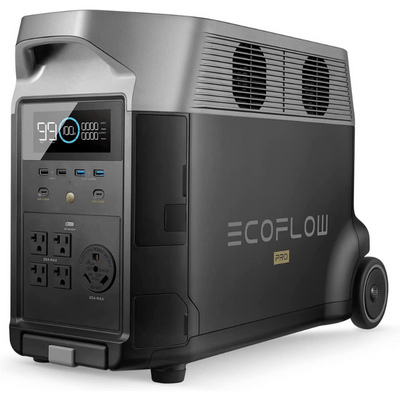

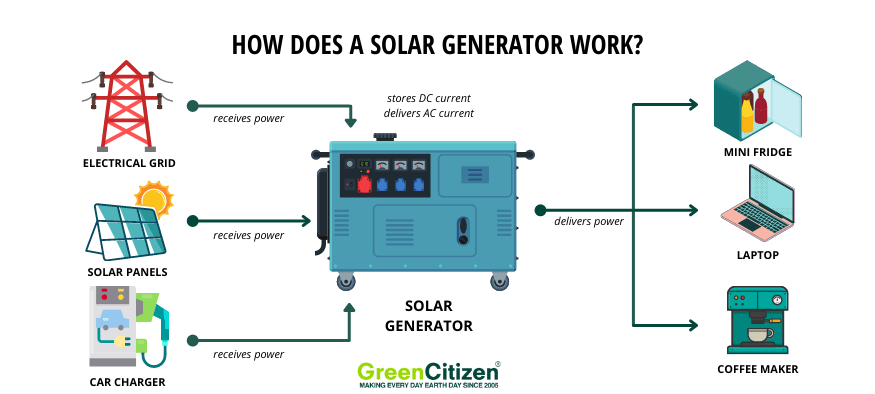
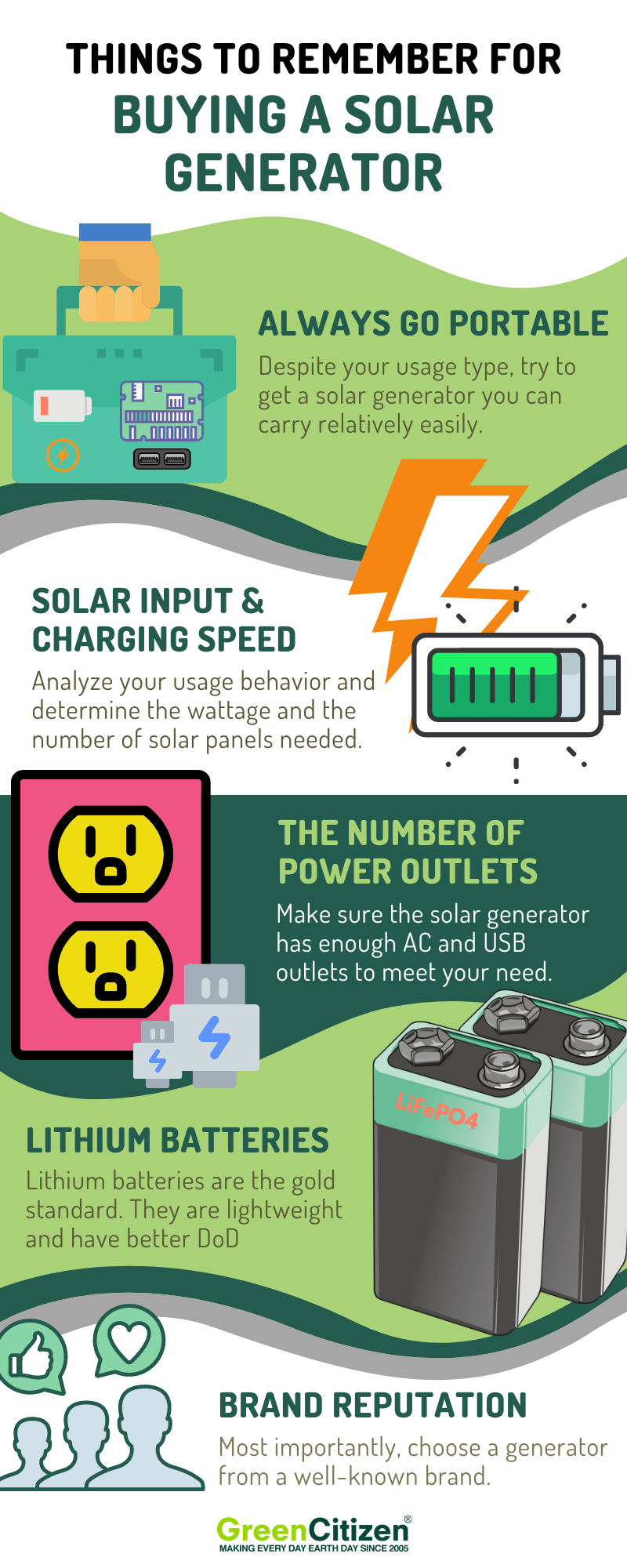
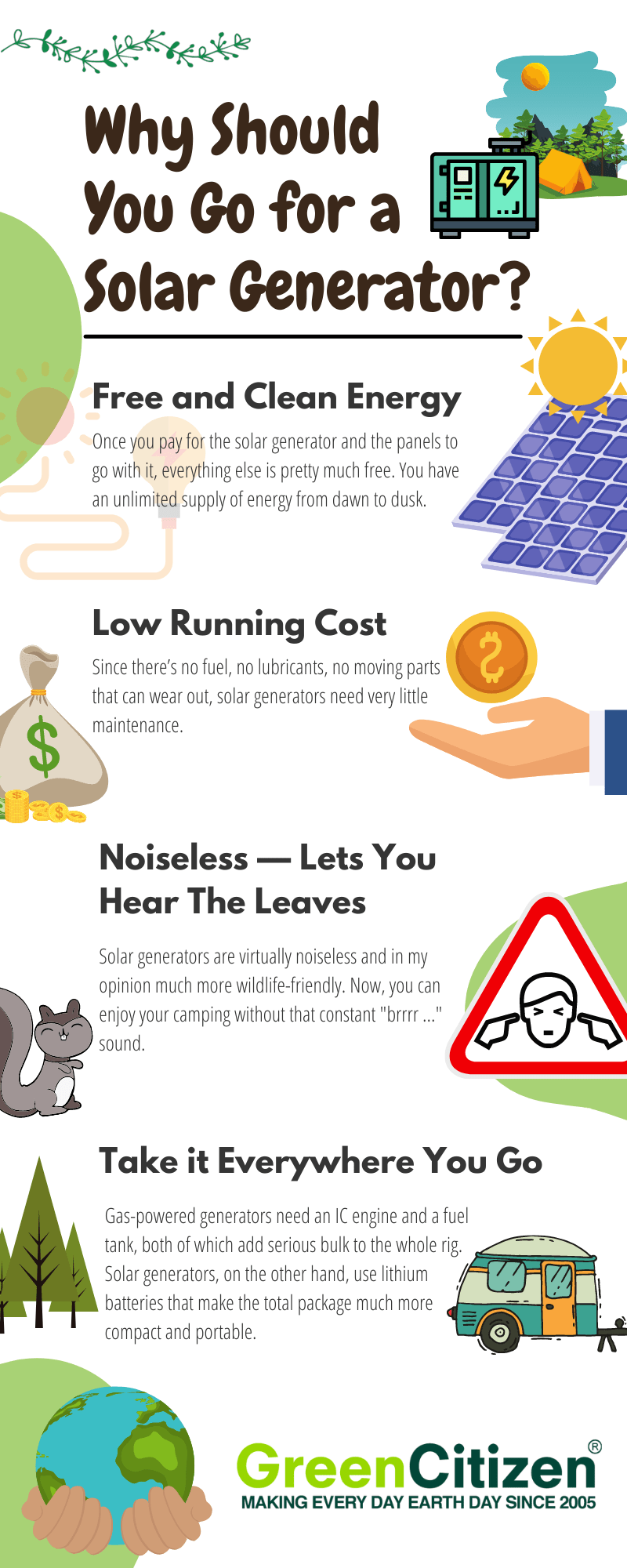






Pingback: Eco-Friendly Home Generator That Can Save You Money
Pingback: How To Get The Right Solar Generator For Your Home - Scoop Art
Pingback: How Solar Powered Generators Can Provide You With Power During A Disaster?
I would like to power a Tiny House with out being on the grid. There will be a Community center that has a connection to the grid.
Use solar and gas.
I live in Pensacola and we do not have bad winters but the summers can be hot.
Would this be less expensive than being on the grid?
Can the “Bluetti AC200P” be expanded in a similar way the “Renogy Lycan 5000 Power Box” can be expanded?
Pingback: Green Camping 101: Go Green With Your Camping Habits - GreenCitizen
I’m looking for a camping unit that can also charge my Zero FX motorcycle. It’s got a 3.6 kw battery. Assume something over 5 kWh to leave a bit for other uses? Have not figured out usage cycle, so not sure if Li Fe is needed.
I looking for a complete kit with the following requirements;
Water Resistant
< 50 lbs for generator
Portable
Enough power to keep portable fridge/cooler going, coffee maker and lights.
Thanks so much. This is a GREAT website. I will refer others.
I think the EcoFlow Delta Pro deserves the top spot on this for all-around performance. It’s the best on the market.
Hello, my self Mike from the USA Searching for the Best Portable Generator for Camping, one of my friends suggested this website for review purpose. So please give some reviews my budget is $500-$700
Hi Mike, Jackery Explorer 500 is the perfect solar generator for your considering your budget.
What solar panels are best with a jackery 500
I’m looking at the Jackery 500. If I have a 1500 W device, does that mean it can power it for 33 minutes? Or do I need a generator that is 1500w or more? Help!!
GreenCitizen is an environmental conservation company providing you with information, services, and products to help you live a sustainable life.
Follow Us
Join Our Newsletter
Quick Links
Blogs
Services(United States)
For Businesses
For Homes
Useful Links
Copyright © 2024 · All Rights Reserved · GreenCitizen
Privacy Policy | Affiliate Disclosure